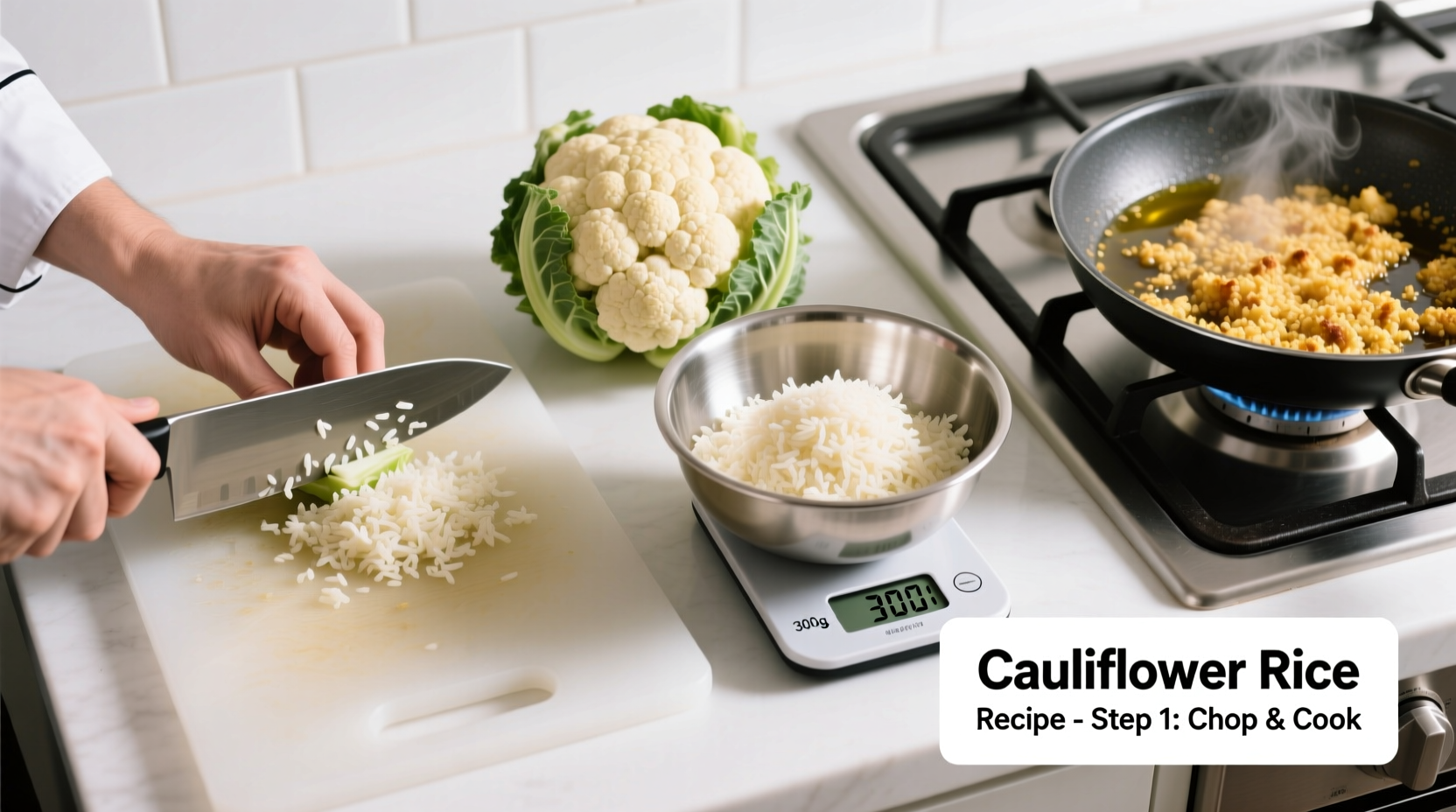Prepare perfect cauliflower rice in 10 minutes by pulsing fresh cauliflower florets in a food processor until rice-sized, then sautéing for 3-5 minutes. This low-carb alternative contains 75% fewer carbs than white rice and delivers essential vitamins C and K.
Looking for a quick, healthy rice substitute that takes minutes to prepare? You've landed in the right place. As a professional chef who's taught thousands of home cooks, I've perfected the simplest method to transform cauliflower into fluffy "rice" that works in any recipe. Forget expensive pre-made versions—making it yourself guarantees freshness, saves money, and lets you control texture and flavor.
Why Cauliflower Rice Deserves a Spot in Your Kitchen
Cauliflower rice isn't just another food trend—it's a practical solution for various dietary needs. With only 25 calories per cup compared to white rice's 205 calories, it's become a staple for health-conscious cooks. The Academy of Nutrition and Dietetics confirms that cauliflower provides 77% of your daily vitamin C needs in just one serving, supporting immune function and skin health (eatright.org).
| Nutrient Comparison | Cauliflower Rice (1 cup) | White Rice (1 cup) |
|---|---|---|
| Calories | 25 | 205 |
| Carbohydrates | 5g | 45g |
| Fiber | 2g | 0.6g |
| Vitamin C | 52mg (87% DV) | 0mg |
Data source: USDA FoodData Central (fdc.nal.usda.gov)
Equipment Options: Choose What Works for You
You don't need special gadgets to make cauliflower rice. Here's how different methods stack up:
- Food processor (best for large batches): Pulse 2-3 times for perfect rice-sized pieces. Avoid over-processing into mush.
- Box grater (no electricity needed): Use the medium holes for consistent results. Takes about 5 minutes for one head.
- Knife method (for texture control): Finely chop florets for slightly larger grains that hold shape better in stir-fries.

Step-by-Step Preparation Guide
Follow these professional chef-tested steps for foolproof cauliflower rice every time:
- Prep the cauliflower: Remove leaves and thick stem. Break into florets no larger than 2 inches.
- Dry thoroughly: Moisture is the enemy of good cauliflower rice. Pat florets dry with a clean kitchen towel.
- Process correctly: Work in batches, filling processor no more than halfway. Pulse 10-15 times until rice-sized.
- Sauté properly: Heat 1 tsp oil in non-stick pan over medium heat. Cook cauliflower 3-5 minutes until tender but not mushy.
- Season wisely: Add salt after cooking to prevent excess moisture release.
When to Skip the Sauté: Raw vs. Cooked Applications
Not all recipes require cooked cauliflower rice. Understanding these context boundaries prevents texture disasters:
- Use raw cauliflower rice for cold salads, sushi bowls, or as a base for ceviche where you want crisp texture.
- Cook it first for stir-fries, fried "rice," or dishes requiring absorption of sauces.
- Avoid overcooking in soups or casseroles—add during last 5 minutes to maintain structure.
The FDA recommends cooking cauliflower to 160°F (71°C) for food safety when serving to vulnerable populations (fda.gov).
Flavor Boosters That Transform Basic Cauliflower Rice
Elevate your cauliflower rice from bland to brilliant with these chef-approved techniques:
- Toast before cooking: Sauté with 1 minced garlic clove for 1 minute before adding cauliflower
- Add umami: Stir in 1 tsp nutritional yeast or ½ tsp mushroom powder for depth
- Perfect seasoning blend: ¼ tsp turmeric (for color), ⅛ tsp black pepper, pinch of salt
- Finish with acid: A squeeze of lemon or lime juice brightens flavors after cooking
Storage Secrets for Maximum Freshness
Proper storage maintains texture and prevents sogginess:
- Refrigeration: Store in airtight container with paper towel to absorb moisture (keeps 4-5 days)
- Freezing: Spread uncooked rice on baking sheet, freeze solid, then transfer to freezer bags (keeps 3 months)
- Reviving leftovers: Sauté frozen cauliflower rice directly from freezer—no thawing needed
Avoid These 3 Common Cauliflower Rice Mistakes
Even experienced cooks make these errors that ruin texture:
- Skipping the dry step: Wet florets create steam instead of sauté, resulting in mush
- Overcrowding the pan: Cook in single layer to allow proper evaporation
- Adding salt too early: Salt draws out moisture—season after cooking for best texture
When Cauliflower Rice Works Best (and When to Choose Alternatives)
Understanding these context boundaries prevents recipe failures:
- Perfect for: Stir-fries, burrito bowls, fried "rice," and as a base for saucy dishes
- Less suitable for: Dishes requiring sticky texture like sushi or risotto
- Texture tip: For heartier dishes, mix 25% cooked quinoa with cauliflower rice











 浙公网安备
33010002000092号
浙公网安备
33010002000092号 浙B2-20120091-4
浙B2-20120091-4